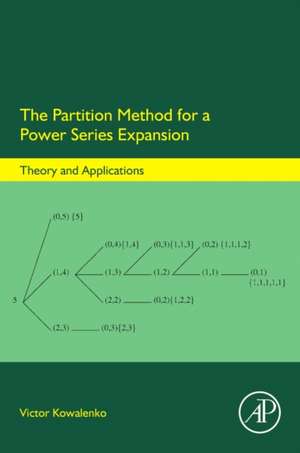The Partition Method for a Power Series Expansion: Theory and Applications
Autor Victor Kowalenkoen Limba Engleză Hardback – 18 ian 2017
In particular, this book describes how the method can be used to determine the Bernoulli, cosecant, and reciprocal logarithm numbers, which appear as the coefficients of the resulting power series expansions, then also extending the method to more complicated situations where the coefficients become polynomials or mathematical functions. From these examples, a general theory for the method is presented, which enables a programming methodology to be established.
Finally, the programming techniques of previous chapters are used to derive power series expansions for complex generating functions arising in the theory of partitions and in lattice models of statistical mechanics.
- Explains the partition method by presenting elementary applications involving the Bernoulli, cosecant, and reciprocal logarithm numbers
- Compares generating partitions via the BRCP algorithm with the standard lexicographic approaches
- Describes how to program the partition method for a power series expansion and the BRCP algorithm
Preț: 417.34 lei
Preț vechi: 453.63 lei
-8% Nou
Puncte Express: 626
Preț estimativ în valută:
79.86€ • 85.40$ • 66.58£
79.86€ • 85.40$ • 66.58£
Carte tipărită la comandă
Livrare economică 11-25 aprilie
Preluare comenzi: 021 569.72.76
Specificații
ISBN-13: 9780128044667
ISBN-10: 0128044667
Pagini: 322
Dimensiuni: 152 x 229 x 22 mm
Greutate: 0.59 kg
Editura: ELSEVIER SCIENCE
ISBN-10: 0128044667
Pagini: 322
Dimensiuni: 152 x 229 x 22 mm
Greutate: 0.59 kg
Editura: ELSEVIER SCIENCE
Public țintă
Mathematicians, theoretical physicists, computer scientists and software engineersCuprins
1. Introduction2. More Advanced Applications3. Generating Partitions4. General Theory5. Programming the Partition Method for a Power Series Expansion6. Operator Approach7. Classes of Partitions8. The Partition-Number Generating Function and Its Inverted Form9. Generalization of the Partition-Number Generating Function10. ConclusionsAppendix A. RegularizationAppendix B. Computer Programs











